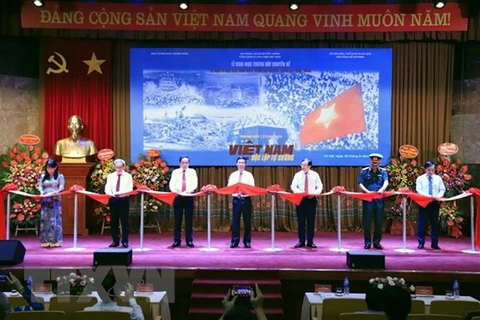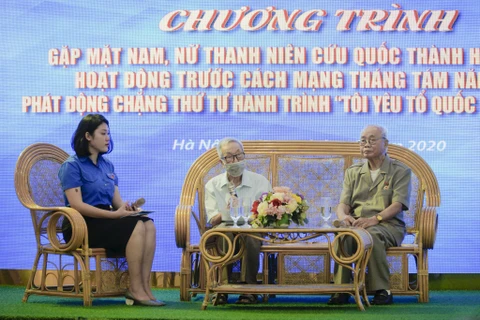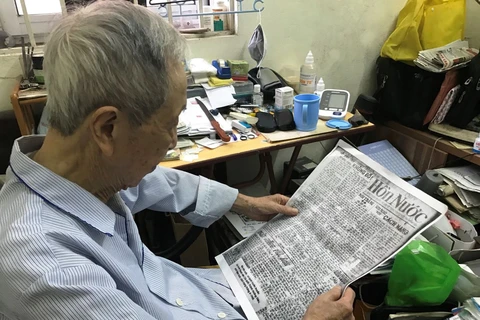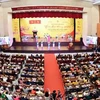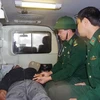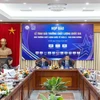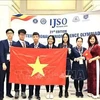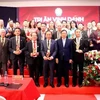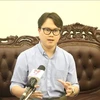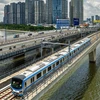In every liberated area, even the smallest or those still experiencing hostilities, classes were held in different forms.
Battles in the cultural and educational front were on par with those in defence, politics and diplomacy during the country’s past struggle for independence. In nine years fighting against the American army, close to 3,000 teachers in the north traveled to the war-inflicted southern region, where they continued standing in front of classes under special circumstances.
Seventy-five years have gone by since peace was restored to the country, practical values of educational activities during the war remain.
Educational front an indigenous feature of Vietnam
Teacher Nguyen Trong Van packed his belongings and kissed goodbye to his young wife and two children, one turning three and the other just eight months, before leaving.
On March 5 in 1969, Van and his over 200 colleagues began their journey to the South serving the mission of developing education in war zones.
“Maybe there are no places like Vietnam where education prevailed throughout a prolonged war. In every liberated area, even the smallest or those still experiencing hostilities, classes were held in different forms. This had become an indigenous feature of the fight to liberate the South,” Van in his eighties emotionally said.
 Classes draw a large number of children, helping to eradicate illiteracy and prepare human resources for the revolution and post-war national construction. (Photo: courtesy of Nguyen Trong Van)
Classes draw a large number of children, helping to eradicate illiteracy and prepare human resources for the revolution and post-war national construction. (Photo: courtesy of Nguyen Trong Van)
“Three areas” strategy
When the war was intense, to thwart the “obscurantism” advocate of the US and its henchmen and to build human resources for the revolutionary forces, the Party and late President Ho Chi Minh paid special attention to developing education in the south across the three areas of liberated area, conflicted area, and temporarily occupied area.
After the 1960 General Uprising Movement, the liberated areas expanded continuously. With new liberated areas, even as small as a village or hamlet, came new classes. In October 1962, a sub-committee for education in the south was established under the Central Office for South Vietnam’s Commission for Information and Education to oversee the work.
Structured and functioning as a small-scale replica of the Ministry of Education, the sub-committee initiated two educational programmes targeting children and adults.
Where there are people, there is education
During the wartime, education faced myriad difficulties in terms of teachers, teaching materials, and even learners. Revolutionary teachers had come up with ideas to build schools and open classes from a mere nothing.
Under the motto of “Where there are people, there is education”, the southern educational sector grew strongly, focusing on its key missions of building facilities and workforce, increasing public knowledge, and fighting the enemy on the cultural front.
Across liberated areas, establishments for the training of teachers, as well as primary, secondary and high schools were set up. Meanwhile, there were also classes for illiteracy eradication and continuing education for locals and personnel.
In conflicted and temporarily occupied areas, mobile classes were prioritised, with their locations and time often changed. There were morning and evening classes in a forest, in a residential house, or in a bunker. Outside these classes, there were guards to promptly inform of enemies coming. Enemy’s raids might destroy villages and kill teachers, but classes were still operated.
 Nguyen Trong Van (second row, second from left) and his colleagues (Photo: courtesy of Nguyen Trong Van)
Nguyen Trong Van (second row, second from left) and his colleagues (Photo: courtesy of Nguyen Trong Van)
As a result, dozens of thousands of public servants, soldiers, and locals escaped illiteracy, while a core political force of the revolution and a generation of quality human resources for the post-war national construction were formed.
Since 1954, movements by students and teachers demanding democracy, tuition-fee cut, wage increase, and anti-terrorism, among others, boomed. In the early 1970s, the groups’ fights turned more directly via demonstrations protesting enslavement culture, calling for peace and independence, and demanding the US to leave Vietnam.
“This demonstrated a strategic view of the Party and President Ho Chi Minh. Amid the war, education was given a special attention and organised well. Education was built into a front of the country’s comprehensive war to fight and to train for national development after the war. This might be an indigenous feature of Vietnam only,” Van concluded./.


